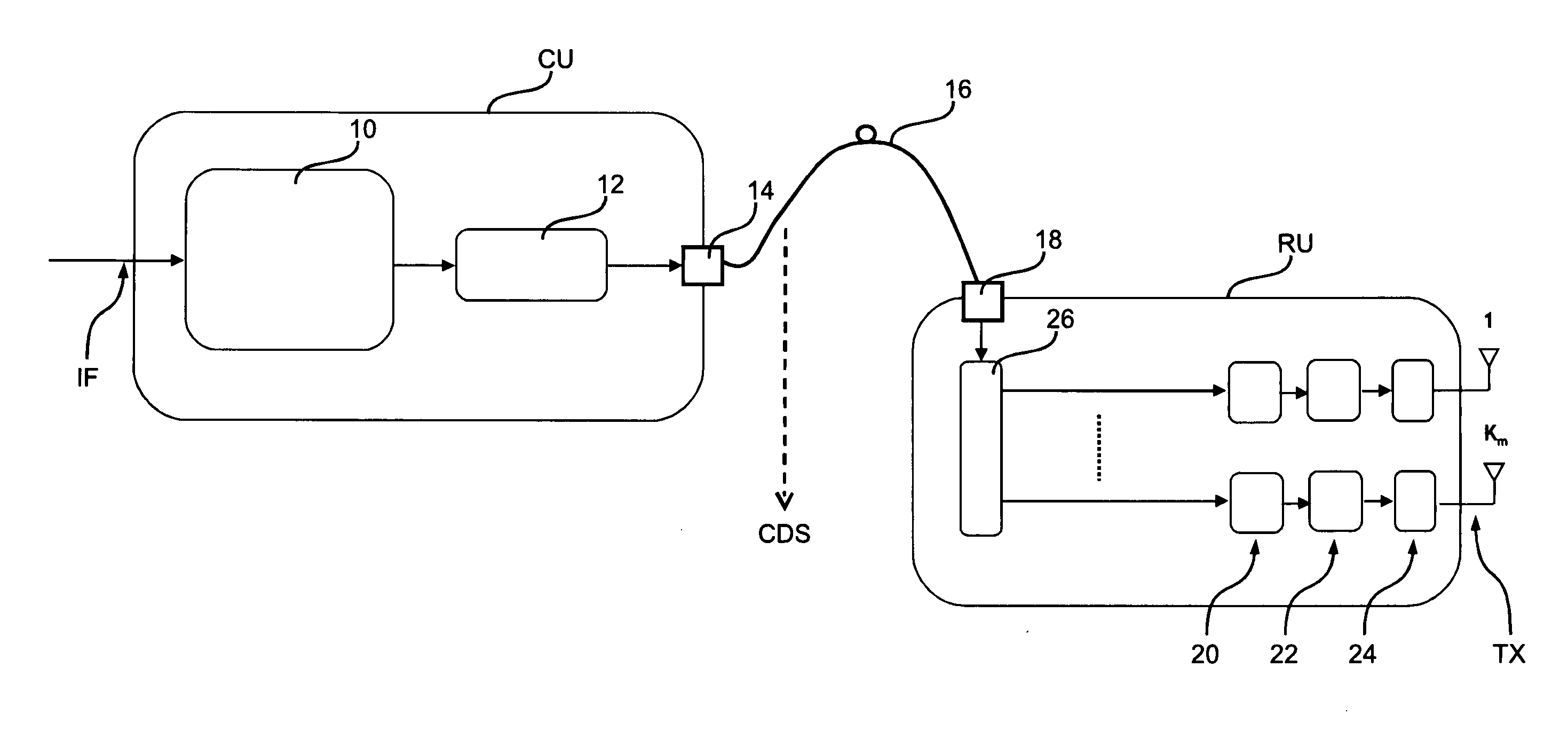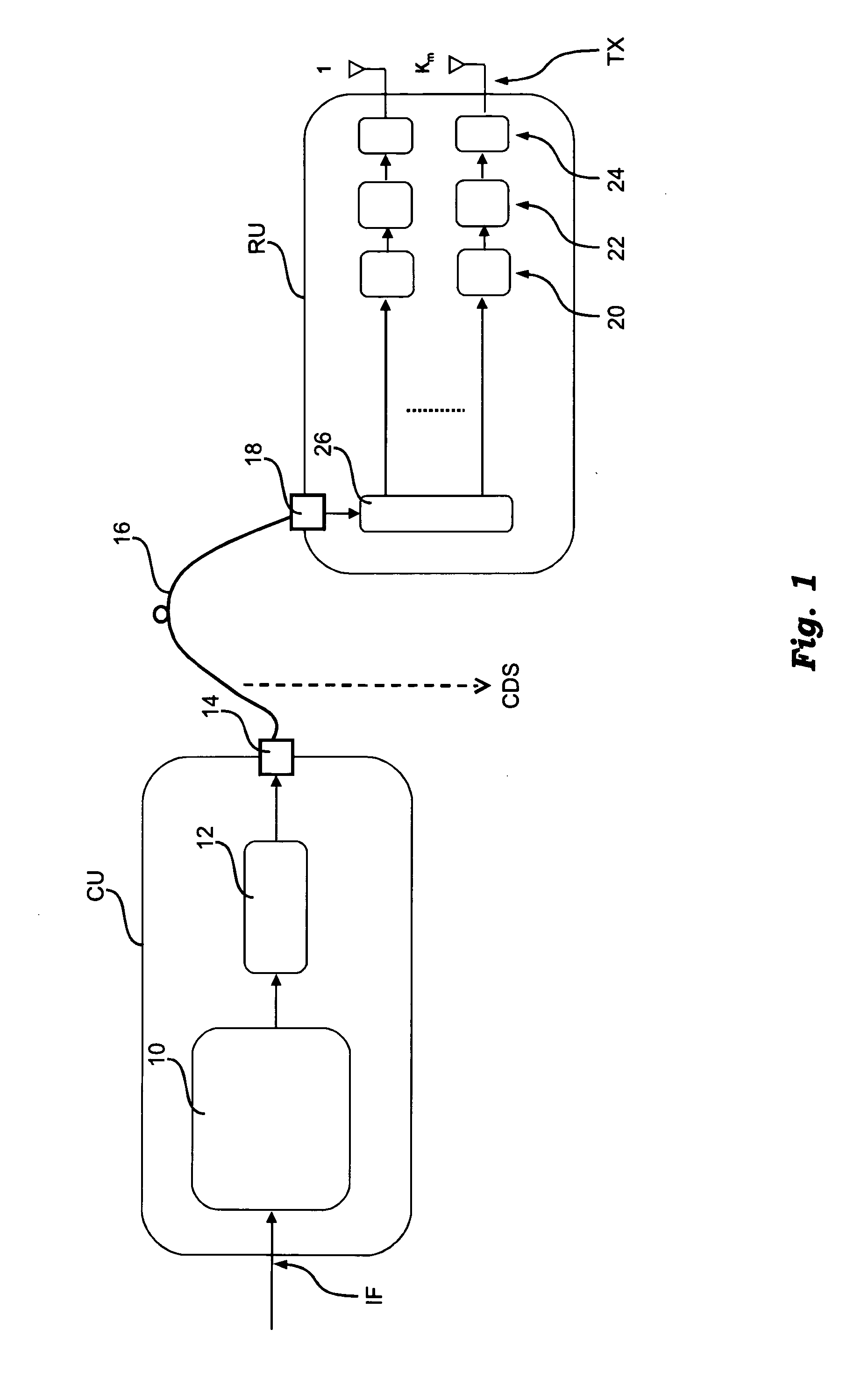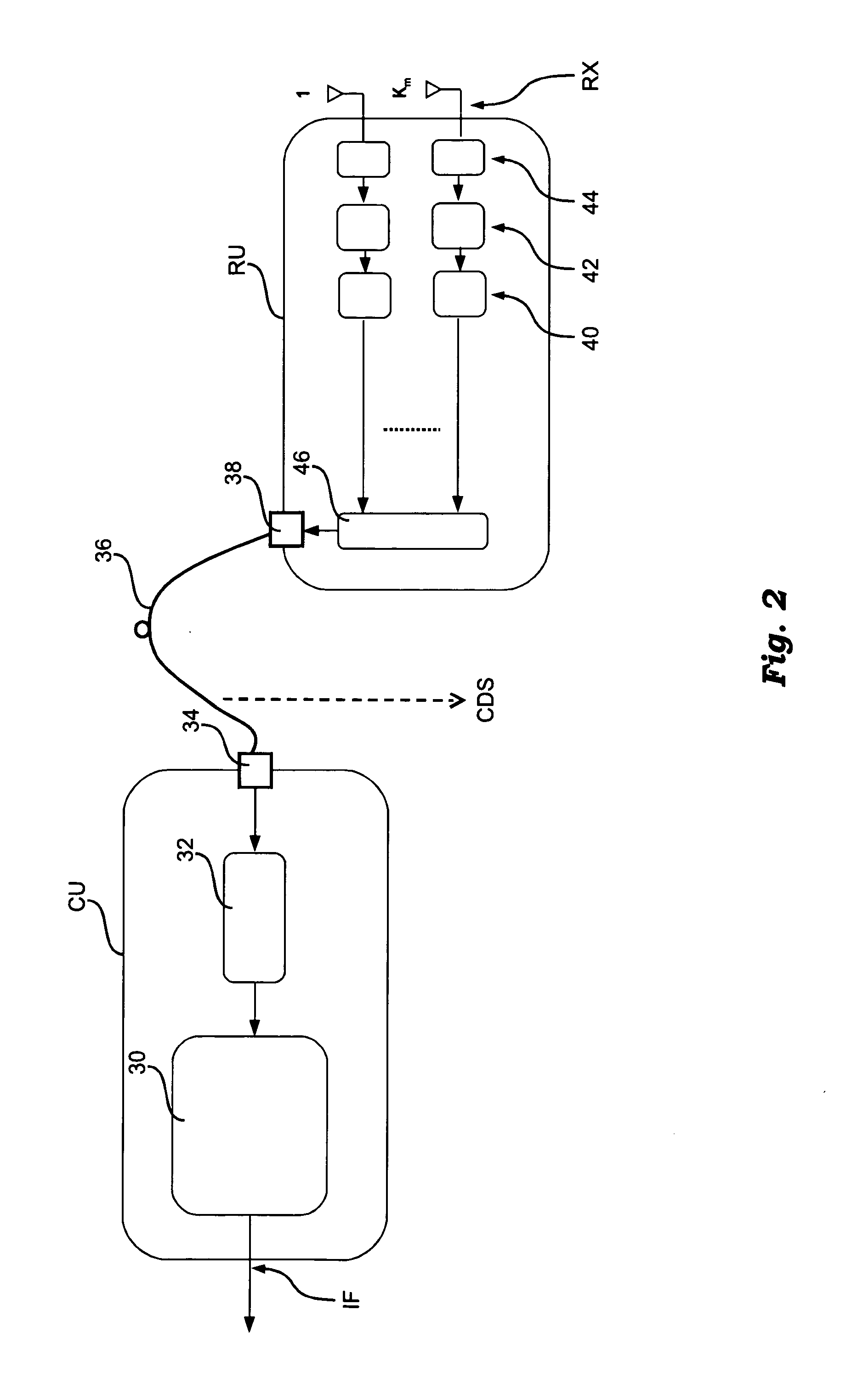Method for distributed mobile communications, corresponding system and computer program product
a mobile communication and distributed technology, applied in the field of mobile communication technology, can solve the problems of limited scalability and lack of flexibility in architecture, and achieve the effect of efficient application of these algorithms
- Summary
- Abstract
- Description
- Claims
- Application Information
AI Technical Summary
Benefits of technology
Problems solved by technology
Method used
Image
Examples
first embodiment
[0072]In a first embodiment, the signal transmitted on the fiber is the signal at the output of the resource mapping block 136 where the users are still separated in the frequency domain.
[0073]This first architecture is shown in FIG. 5 for the transmitter portion of an OFDM based DAS system, which receives data e.g. via a conventional S1 interface. Specifically, the baseband functionalities are split between a central unit CUOFDM and remote units RUOFDM.
[0074]In this embodiment, the central unit CUOFDM still performs the operation of the resource mapping block 136, and all prior operations, such as channel coding, H-ARQ, interleaving, modulation and MIMO processing, at a block 12a (i.e. the operations of blocks 126 to 134 in FIG. 3).
[0075]In the exemplary embodiment illustrated, the NS resource grids RG at the output of the resource mapping block 136 are transmitted e.g. column by column over the fiber link 16. As mentioned in the foregoing, the data at the output of the resource ma...
second embodiment
[0112]A second embodiment takes the foregoing into account by providing the same level of flexibility in terms of user based processing at the remote units RU, but at the same time retaining compatibility with the OBSAI and CPRI standards. Compatibility with the OBSAI / CPRI standards is counterbalanced by the fact that the throughput over the fiber links remains substantially the same as in the prior-art DAS architecture shown in FIGS. 1 and 2.
[0113]This embodiment is shown in FIG. 7 for the downlink transmission part. Substantially, this embodiment is based on the DAS architecture shown with respect to FIG. 1.
[0114]A central unit CUOFDM includes a block 10, which implements the higher layer protocols (L2 / L3), and a block 12, which performs the physical layer (L1) signal processing operations up to the generation of the composite digital baseband signal CDS. The composite digital baseband signal is then converted from electrical to optical at a block 14 and transmitted over the fiber...
PUM
 Login to View More
Login to View More Abstract
Description
Claims
Application Information
 Login to View More
Login to View More - R&D
- Intellectual Property
- Life Sciences
- Materials
- Tech Scout
- Unparalleled Data Quality
- Higher Quality Content
- 60% Fewer Hallucinations
Browse by: Latest US Patents, China's latest patents, Technical Efficacy Thesaurus, Application Domain, Technology Topic, Popular Technical Reports.
© 2025 PatSnap. All rights reserved.Legal|Privacy policy|Modern Slavery Act Transparency Statement|Sitemap|About US| Contact US: help@patsnap.com



